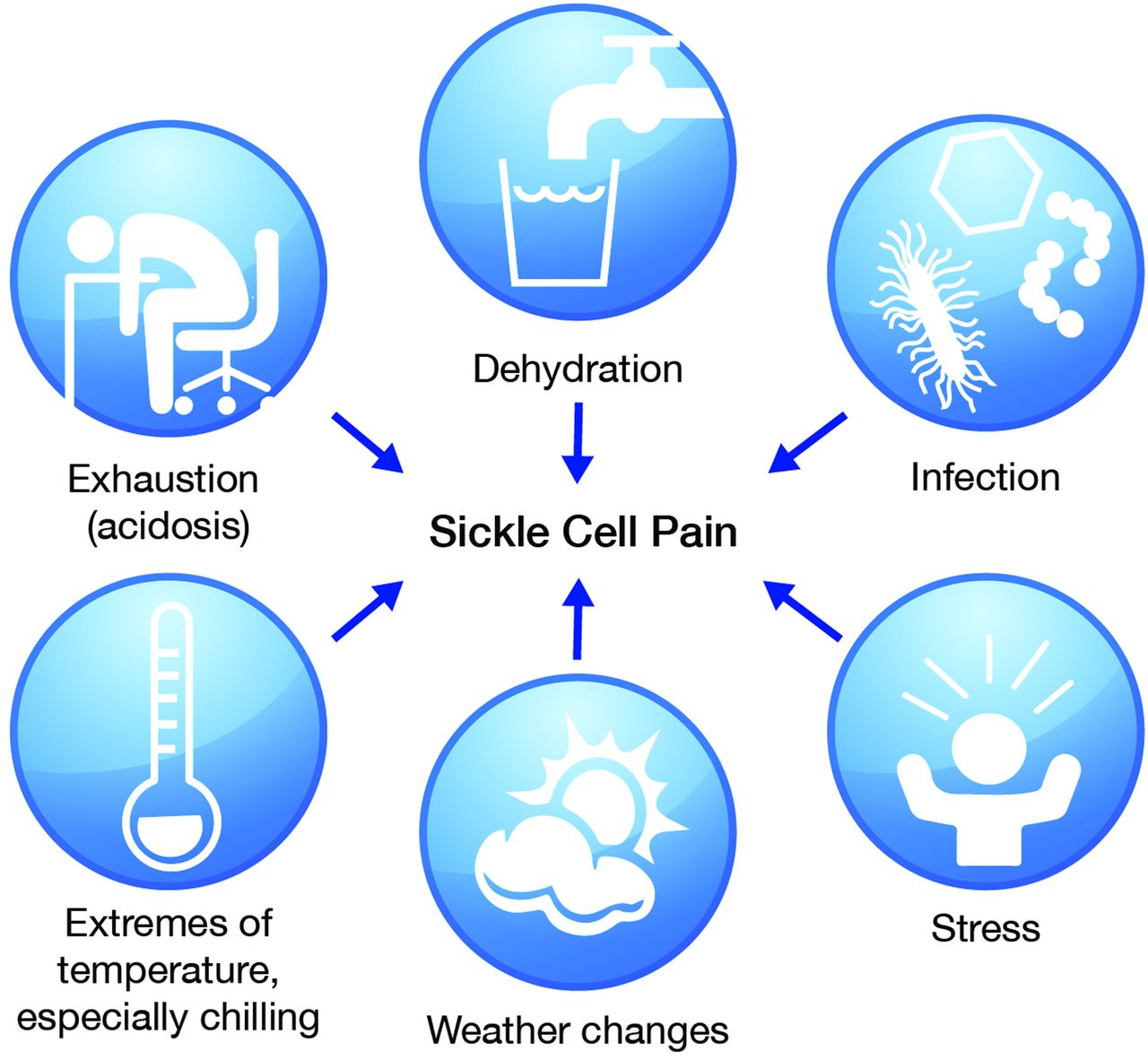The changing seasons can be a visual delight, but for those living with sickle cell, harsh weather can present a slew of challenges.
According to the World Health Organization (WHO), the prevalence of sickle cell anemia is highest in sub-Saharan Africa, affecting 1-2% of newborns. Yet, the impact knows no boundaries.
This article offers strategies for navigating the perils of extreme weather while living with sickle cell disease.
 Hydration is key: Extreme weather, whether hot or cold, can dehydrate you quickly. According to online platform Healthline, staying hydrated can help prevent the formation of sickle-shaped cells that block blood flow. Aim for at least 8 cups of water daily and more if you are active.
Hydration is key: Extreme weather, whether hot or cold, can dehydrate you quickly. According to online platform Healthline, staying hydrated can help prevent the formation of sickle-shaped cells that block blood flow. Aim for at least 8 cups of water daily and more if you are active.
Keep warm, keep safe: Cold weather often triggers sickle cell pain crises. Wearing layers and investing in good quality thermal wear can make a world of difference. WebMD, a trusted source for health and wellness information, indicates that cold weather significantly raises the risk of a pain crisis for sickle cell patients.
 Weather-proof your diet: Nutrition plays a pivotal role in managing sickle cell symptoms. A balanced diet rich in vegetables, lean proteins, and low-fat dairy can help.
Weather-proof your diet: Nutrition plays a pivotal role in managing sickle cell symptoms. A balanced diet rich in vegetables, lean proteins, and low-fat dairy can help.
According to Harvard Health, a diet rich in essential nutrients can significantly reduce symptoms and improve the quality of life for those living with sickle cell.
Regular exercise: While it may seem counter-intuitive, regular low-impact exercises like swimming or walking can be beneficial. Online platform, Verywell Health, points out that exercise improves circulation, reducing the risks of blood clots and blockages, which are common complications for sickle cell patients.
Emotional support: Living with sickle cell can be emotionally draining. Support from family and friends is invaluable. Also, consider joining support groups. A study cited by Medical News Today found that emotional support drastically improved the mental health of sickle cell patients.

Beware of rapid weather changes: Transitions from hot to cold or vice versa can be triggering. Always have a survival kit that includes hydration salts, pain relievers, and thermal blankets. Healthline notes that a survival kit has proven to be a life-saving measure for many.
Regular check-ups: Monitoring is crucial. Regular check-ups can help you adjust your management plan based on the current weather conditions. WHO affirms that a regular check-up every six months reduces the risks of complications by 30%.

Seek Immediate help for crisis symptoms: Time is of the essence during a pain crisis. Symptoms like severe pain, fever, and uncontrolled symptoms require immediate medical attention. Verywell Health stresses the importance of not ignoring warning signs, as delays can lead to severe complications.
Stress management techniques: Stress aggravates sickle cell symptoms. Techniques like deep breathing and mindfulness meditation can help. Harvard Health indicates that stress management can significantly decrease the frequency of crises.
Weather changes are inevitable, but the complications they bring for sickle cell patients don’t have to be. With these strategies, you can be one step ahead and make the harsh weather periods less intimidating.
Remember, it’s not just about surviving; it’s about thriving, even when nature doesn’t make it easy. Stay strong and resilient, and let each season be a testament to your unyielding spirit.


